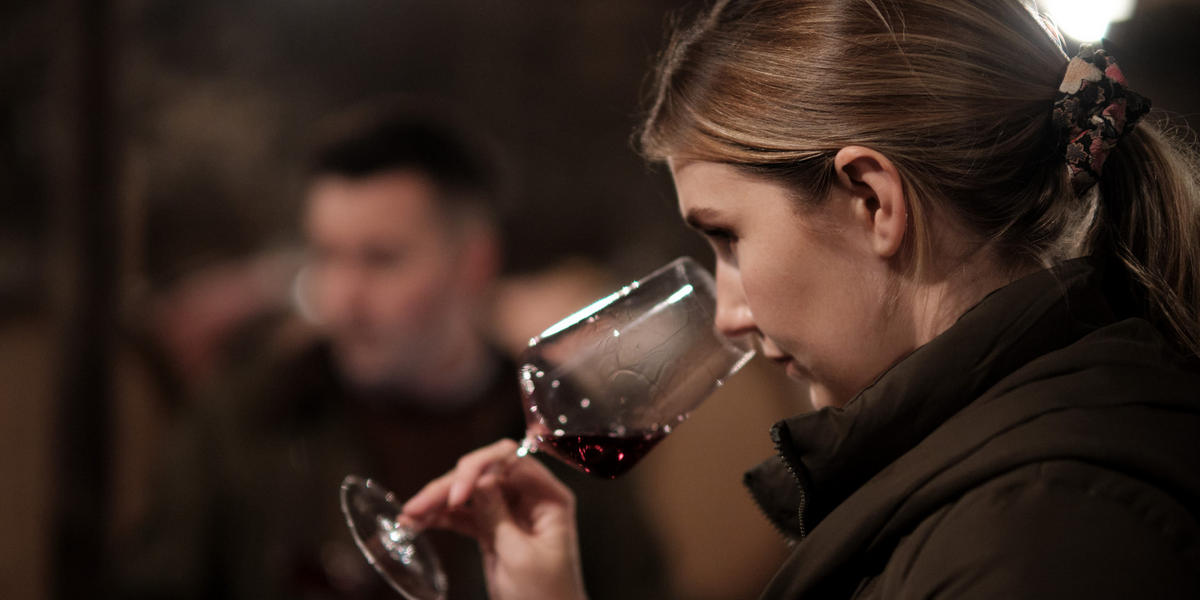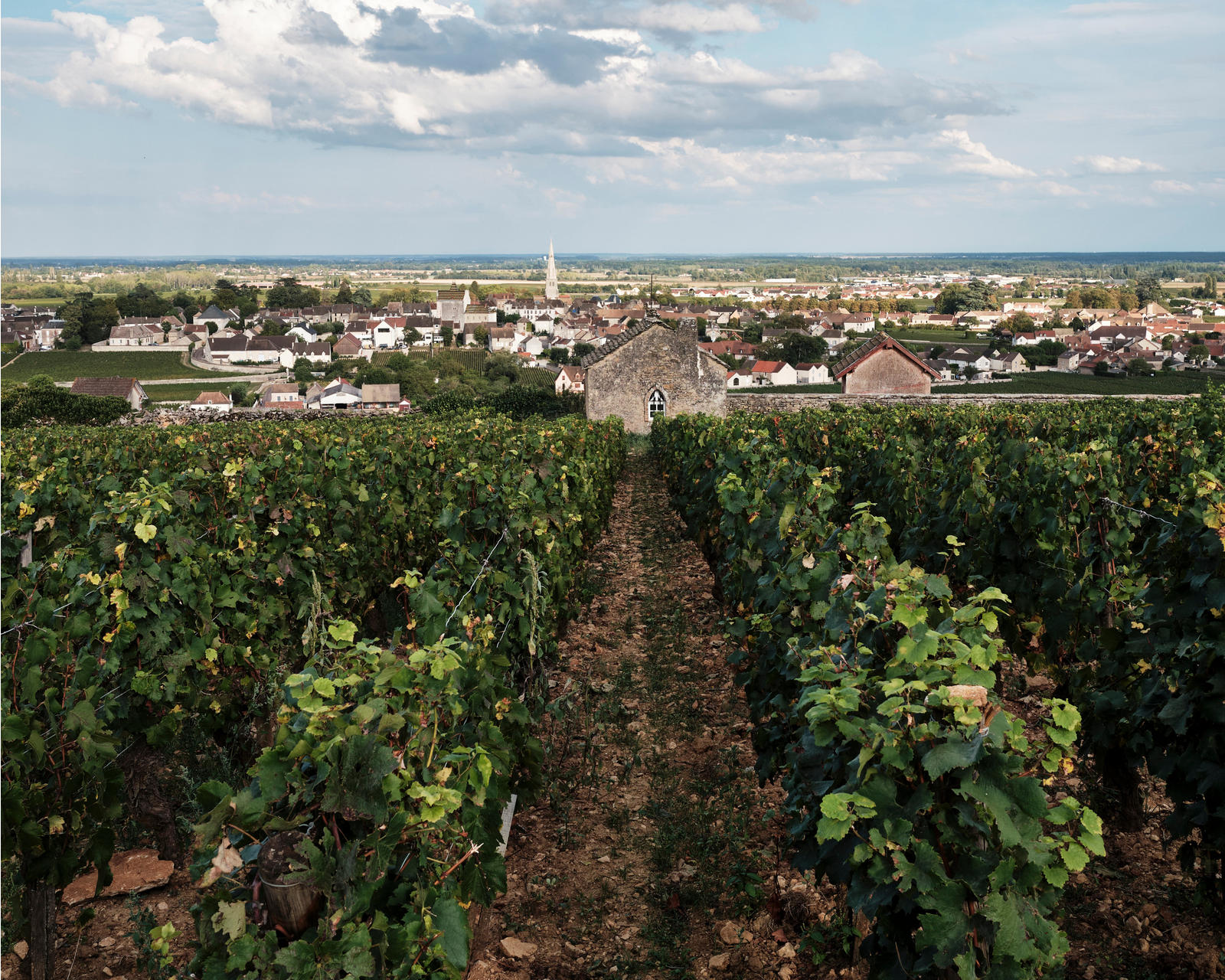Home > Editorial > Burgundy 2022 vintage report
Published: 20th December 2023
10-MINUTE READ
Adam Bruntlett, Burgundy Buyer
These are the best wines our Burgundy Buyer has come across in 10-plus years of tasting. Here, Adam Bruntlett shares his thoughts on the excellent new vintage
The 2022 vintage proves that Burgundy has a strong and bright future, even in the face of unprecedented extremes of weather. On paper, this was the driest, warmest and sunniest year on record. However, our five weeks of tasting across the region revealed a consistently excellent vintage with wines of wonderful typicity, purity and freshness. Of the recent climate-change vintages that have now become the norm, 2022 is the most successful yet.
Harvest began in August. Indeed, for many domaines, all the grapes were in before September. Yet we should not be surprised that the wines retain a Burgundian restraint. Look back at the great vintages of the 20th century – 1945, 1947, 1959 and 1964, for example – and you’ll find that many of them were exceptionally warm. The principal difference between that period and now is that previously once-a-decade conditions have become commonplace. Even more importantly, vignerons have adapted their processes to this new normal, aided by an understanding of grape-growing and winemaking that has never been more profound.
Production in both colours is healthy without being excessive: most of our growers reported yields around 10% below the permitted maximum. Compared with 2020, white volumes are broadly the same and reds are a little up. For the white wines, this is another excellent vintage which stylistically reminds me of 2017 and 2020. Finding a comparator for 2022 is trickier for red wines. They offer the elegance, charm and perfume of 2017, along with a little added concentration. I’ve started opening some of my 2012s recently; there are some similarities there, too.
IN THE VINEYARD
In contrast to the nightmarish 2021 growing season, this was a much more relaxed, stress-free affair. Growers reported relatively few challenges beyond the lack of water and risk of sunburn. These twin threats have become the norm, and growers have developed strategies to minimise their impact on the fruit.
As has been the case for several years, winter was dry and relatively mild, and budbreak began a little early, in late March. Fortunately, development slowed slightly; by the start of April, the vines were behind the 20-year average.
A familiar story began once again as temperatures then dropped in early April, thanks to a mass of cold air from the north. The risk of frost loomed large. Over a period of around 10 days (2nd-11th April), growers were on red alert – lighting candles, firing up wind turbines, aspersion systems and heating cables. Luckily this time, the threat passed with limited damage and volumes were not significantly impacted.
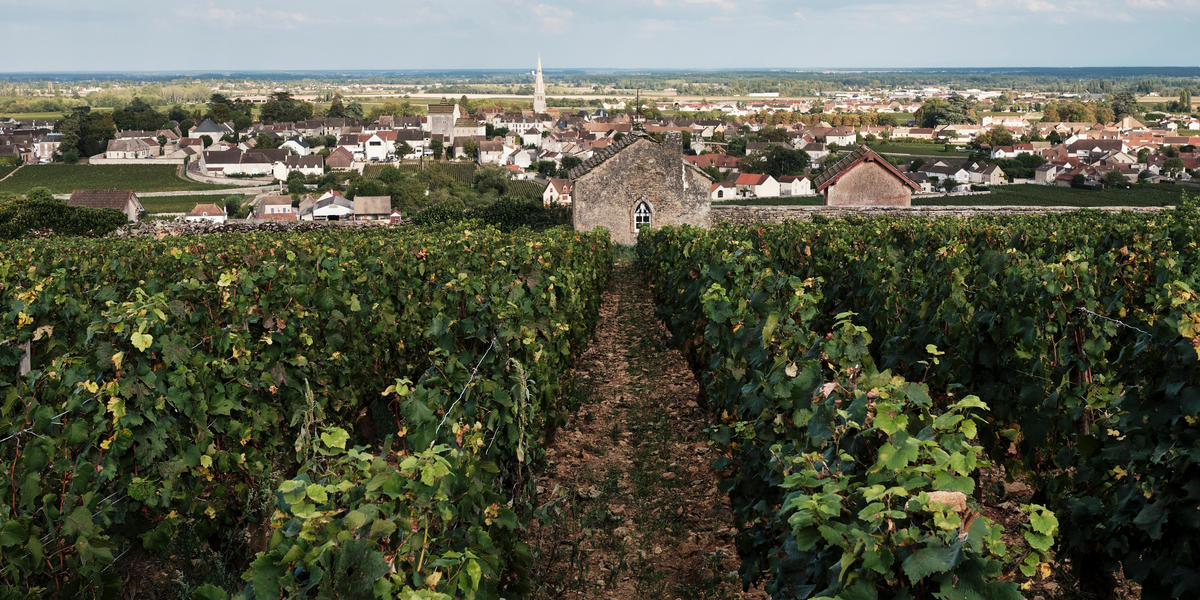
Temperatures from May to August were higher than average, though not significantly so and, importantly, without the same heat spikes as in 2003 or 2020. June was perhaps the saviour of the whole vintage. Throughout the spring, rainfall was significantly lower than usual, but in June, Burgundy received around double the typical amount of precipitation. This, many growers reported, refilled the water reserves and allowed the vines to get through the warm, dry summer.
The village of Gevrey-Chambertin arguably had too much rain on 22nd June, with a torrential downpour of 100mm falling in just ten minutes. Many vines were left in standing water and large quantities of mud were washed down from the vineyards and into the village. Much of this ended up in several cellars, including that of the Hôtel Les Deux Chèvres. Luckily, the warm and dry conditions that followed – along with an exceptional, appellation-wide application of Bordeaux mixture (a fungicide) by helicopter – ensured that the damage was minimal.
Outside of June, the summer was drier, sunnier and warmer than the norm, though most growers reported some small rain showers that acted as a pressure-valve when the vines began to struggle. A few reported some issues with hydric stress, particularly for young vines and plots located on stony, well-draining soils, which are typically found at the top of the slope.
HARVEST
After such a warm and sun-drenched growing season, it was no surprise that the harvest began in August – as it has in many recent vintages. For the white wines and early ripening reds of the Côte de Beaune, picking began around 24th August. In Chablis, first out of the blocks from our cohort was Samuel Billaud, who began on 25th August; everyone had begun by early September. In the Côte de Nuits, most growers began around the very end of August or the first few days of September.
The impression we got from growers was that the choice of when to pick was relatively simple compared with 2018, 2019 or 2020. This is perhaps an effect of the increasing frequency of such precocious harvests. Despite the expected variation between harvest dates, there are no wines that felt as though they were picked either too late or too early.
The quality of grapes at harvest was reported to have been excellent. I had the good fortune to be in the region during the first week of September and can confirm that the Pinot Noir grapes I observed on the sorting table were magnificent. There was very little sign of dried or raisined fruit.
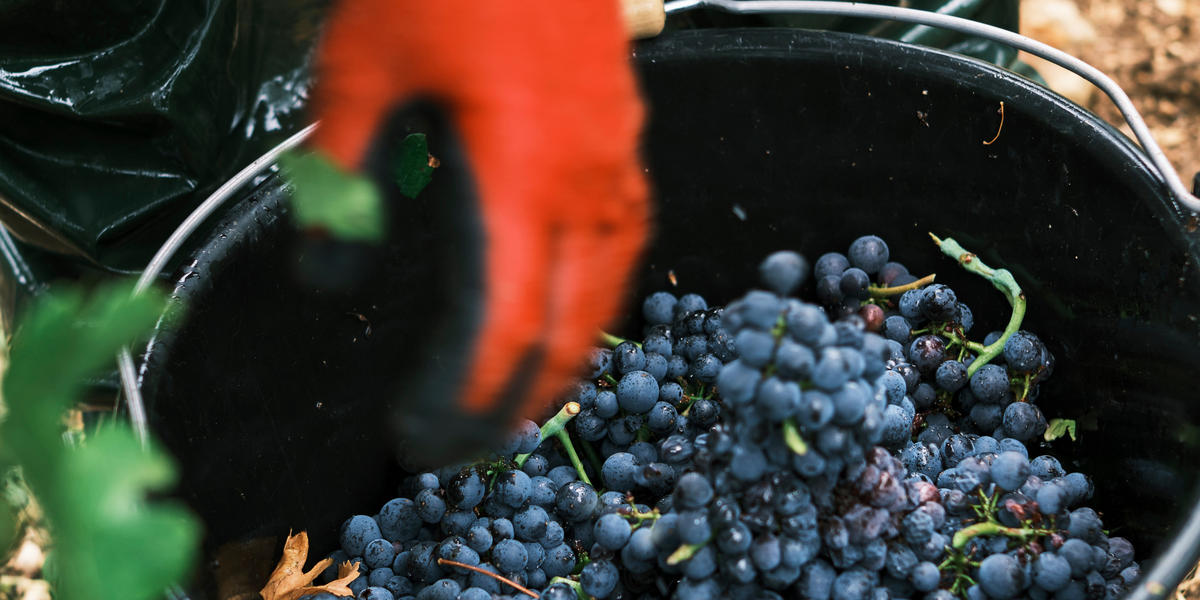
Some of our growers explained that, as in 2020, the yield in juice was a little lower than they would typically expect. The warm and dry conditions had caused the grapes’ skins to thicken and the juice inside to concentrate, meaning more bunches than usual were required to provide enough juice to fill a barrel.
Sugar levels were generally healthy without being excessive, with most whites between 12.5-13.5% potential alcohol, and reds between 13-13.8%. As a result, there was very little need for chaptalisation this year, though some growers preferred to pick earlier and preserve more acidity, and then chaptalizing by half a degree to hit 12.5-13%. Others waited a little longer to achieve better phenolic ripeness and in so doing gained half a degree or so of alcohol.
Acidity levels were generally good, but with low levels of malic acid and a much higher proportion of tartaric acid. The former was “burnt off” by the sun and heat, and is also converted to the softer, creamy lactic acid during malolactic fermentation. This has left wines which are surprisingly fresh despite the warmth of the year because the harder tartaric acid, which does not change once the grapes are picked, is more pronounced.
IN THE CELLAR
The vintage was reasonably simple in the cellar, though some malolactic fermentations were slow (despite the low levels of malic acid). Several winemakers had decided to shorten the élevage of their 2021s, but things were mostly back to normal for 2022 – the greater concentration of the vintage necessitating a little more time in barrel.
Gentle extraction in the reds is the order of the day across almost all of Burgundy these days. This was the case in 2022. Very few punch-downs were done, with gentler pumping-over being preferred. With thick skins, there was little need to extract colour or tannin from the grapes. Interestingly, the wines do not possess the deep colours of 2018, 2019 or 2020.
Whole-bunch fermentation continues to be a somewhat divisive topic. Some growers preferred to use more whole bunches to give their wines a sense of freshness; even Dominque Lafon, previously an avowed de-stemmer, used some stems. Others argued that stems could potentially raise the pH to a dangerous level, risking microbial spoilage; they opted instead to de-stem. Both approaches appear to have been successful, depending on personal tastes.
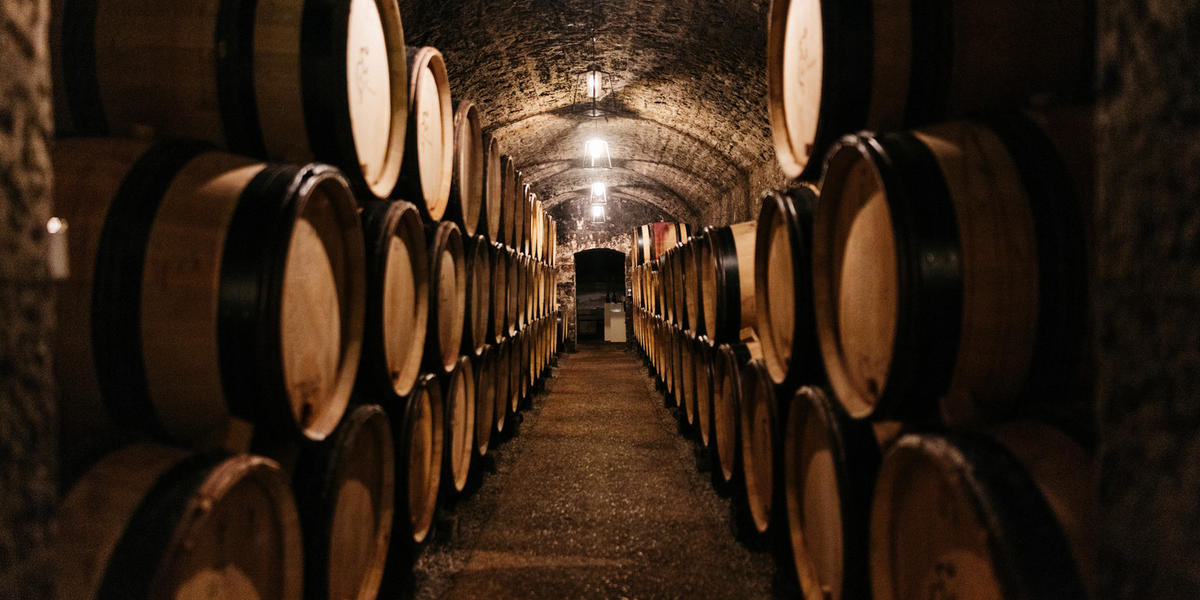
The white wines
Chardonnay has shown in recent vintages that it can still produce wines of freshness and energy in the face of difficult conditions. This should come as no surprise to anyone who has tasted excellent Chardonnay wines from warmer regions around the world. But there is a key distinction to be made between Chardonnay from Burgundy and that from elsewhere. White Burgundy carries a rather substantial premium over its competitors these days, and it has to justify that through its mineral focus and terroir expression.
This was put eloquently by Benoît Droin in Chablis: the key, he explained, is to pick early enough to make Chablis. Picking too late, he suggested, would mean making Chardonnay. In picking early, growers have produced not Chardonnay, but Burgundy. It is true that the lean, green and frankly quite often a bit mean style of white Burgundy has become the exception rather than the rule. While I’m sure this will disappoint some purists, the wonderful thing about the 2022s and the new style of these wines is that they offer such broad appeal.
The 2022 vintage faithfully reflects not only the differences between each individual village, but the hierarchy across appellations. There are clear steps between regional, village, Premier Cru and Grand Cru wines. What is important to note, however, is that less-favoured sites which in the past were considered too cool are now producing truly worthy wines. The low-lying vines classified as Bourgogne or village-level, as well as the Hautes-Côtes and cooler villages such as Auxey-Duresses and St Romain, are all worth a look.
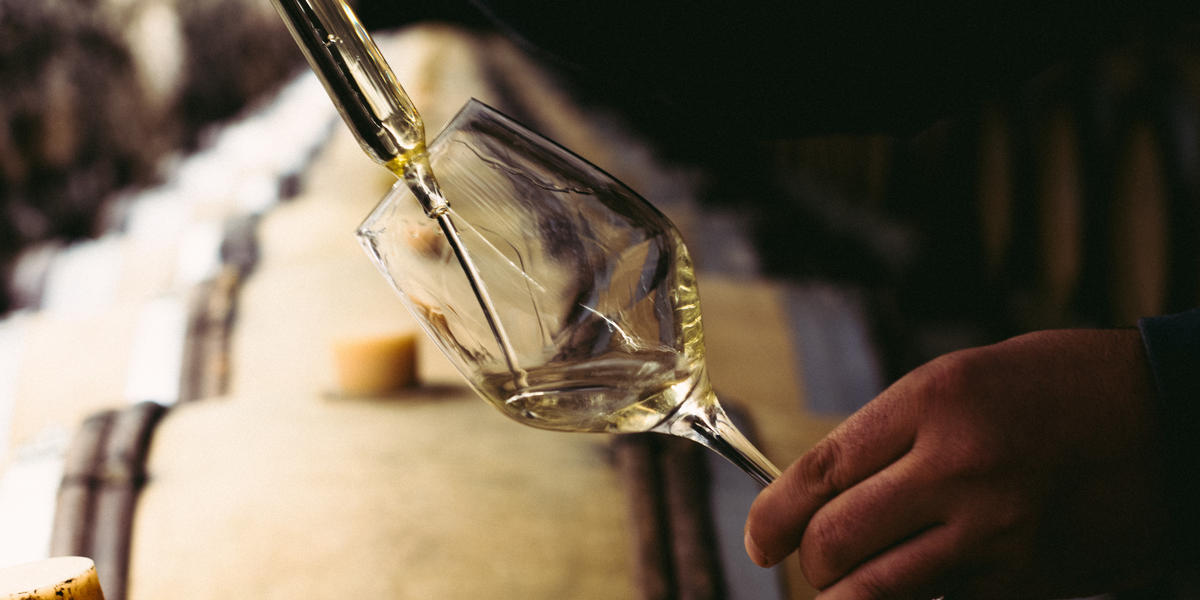
The red wines
Chardonnay is a hardier grape than Pinot Noir. So, as Dominque Lafon observed, it will become the norm to make great white wines in Burgundy more often than not. Red wines, he believes, present the greater challenge. The reputation of world-class Pinot Noir, and in particular Pinot Noir from Burgundy, is built on elegance, freshness, perfume, subtlety and nuance. All of these characteristics can be lost or denatured when conditions are too warm, alcohol levels rise, acidity levels fall and tannins become firmer.
Fortunately, that is not the case in 2022. Throughout the course of our tastings, it became clear that this is a great red-wine vintage. These wines are perfectly balanced, with no one element dominating any other. The aromatic and flavour profiles are firmly red-fruited, with an expressive floral character that invites you in and holds you in raptures. What is perhaps the differentiating factor between these wines and those of other recent vintages such as 2018 or 2020 is the perfect ripeness of the tannins. So sweet as to melt away on the palate, they offer a creamy, mouthcoating character without any hint of dryness.
The wines express an immediacy which comes courtesy of their perfect balance, sweet fruit profiles and, in the case of the reds, melting tannins. They will certainly be approachable in youth, and it is debateable whether they will shut down or go through a closed period. But I suspect that may well be to underestimate the ageing potential of these wines. That they do not have a huge tannic structure is not a hindrance to their longevity. As I wrote of the 2017s five years ago, what gives Burgundy wines their ageing potential is not their tannins or power, but their balance.
It is difficult to compare 2022 to recent vintages; Dominique Lafon went back a decade or more without finding anything he felt was as good as 2022. There are some similarities with 2017’s openness and charm, though there is greater concentration in 2022 – and these wines will live much longer. Some growers, Maxime Rion among them, even suggested that 2022 is the vintage that 2005 would have been if the viticulture and winemaking had been as considered as they are today. What is certain is that these wines are the best I have tasted in over a decade of working with Burgundy.
